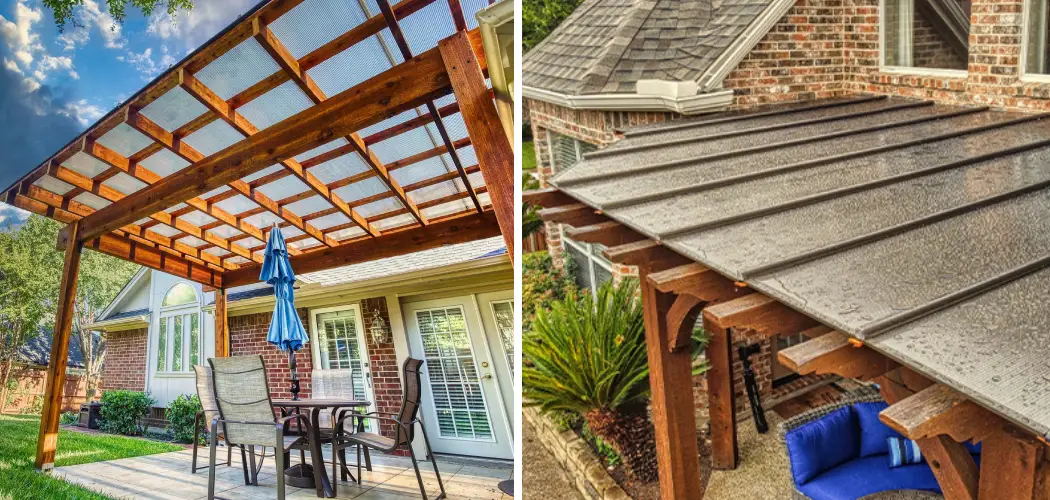Covering a pergola is a strategic and aesthetic choice that can significantly enhance your outdoor living space. It provides shade, protection from the elements, and can add a cozy and intimate ambiance to your outdoor area. Whether you want to shield your space from the sun’s harsh rays, create a more private atmosphere, or simply add an element of design to your pergola, choosing the right covering is crucial.
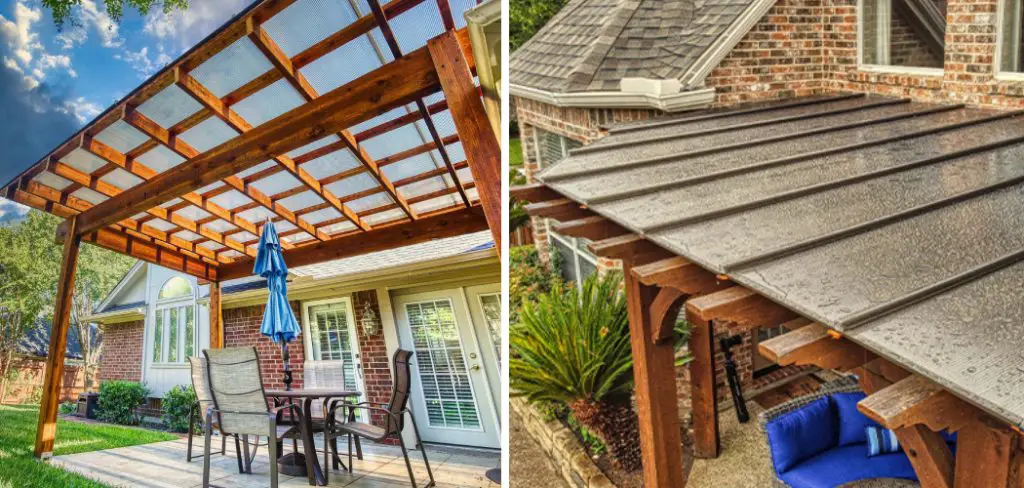
From fabric and vines to retractable canopies and wooden slats, various options exist to suit your preferences and the climate of your location. In this guide, we will explore the different methods and materials available for How to Cover a Pergola, enabling you to create a delightful outdoor oasis that perfectly suits your needs and style. Let’s get started on how to cover a pergola like a pro!
The Purpose of Covering a Pergola
A pergola is a popular outdoor structure that can provide shade and add aesthetic appeal to any backyard or garden. However, it is often exposed to harsh weather conditions, including intense sunlight and heavy rain. This can lead to damage and deterioration over time, requiring frequent maintenance and repairs.
Covering a pergola is therefore not just about enhancing its appearance; it also serves a practical purpose of protecting the structure and its occupants from the elements. In this guide, we will discuss the different types of pergola covers, their benefits, and how to choose the right one for your needs.
Determining the Type of Covering
Once you have decided to add a cover to your pergola, the next step is to determine what type of covering will best suit your needs. There are various options available, each with their own pros and cons.
One popular choice is a fabric canopy or awning. This type of covering provides shade and protection from the sun’s UV rays while still allowing for some natural light to filter through. It is also relatively easy to install and cost-effective.
Another option is a retractable canopy, which can be extended or retracted as needed. This provides flexibility in terms of how much shade you want at any given time. However, it may require more maintenance and could potentially be less durable compared to other types of covers.
If you are looking for a more permanent and sturdy option, consider a solid roof cover such as wood or metal. This will provide maximum protection from the elements but may also require professional installation and can be more expensive.
You should also consider the climate in your area when deciding on a covering. For example, if you live in an area with heavy rain or snow, a solid roof cover may be a better choice to prevent damage.
In addition to the type of covering, you should also think about the style and design. This can include choosing a color that complements your pergola and surrounding area, as well as any additional features such as curtains or mosquito netting.
10 Methods How to Cover a Pergola
1 Canvas
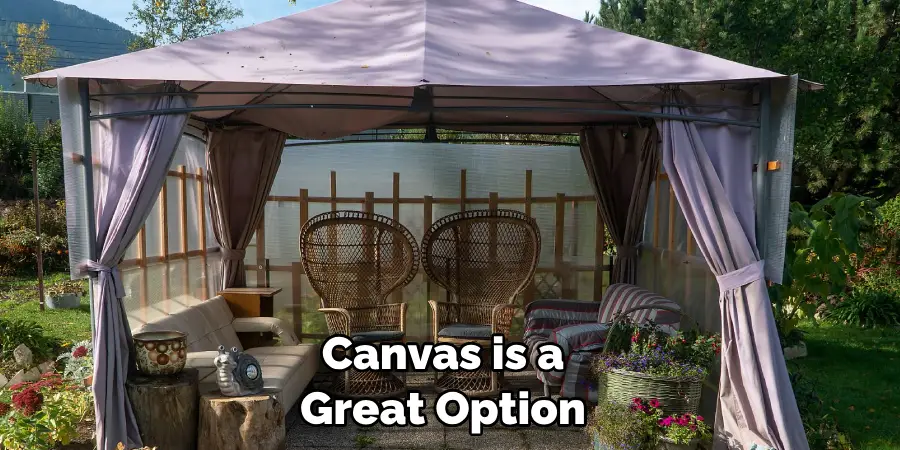
Canvas is a great option for covering a pergola as it is lightweight and easy to install. It also provides excellent UV protection and can be found in a variety of colors and patterns. Canvas is relatively inexpensive, making it a great option for those on a budget. It should be noted, however, that canvas is not the most durable material and may need to be replaced more often than other materials.
2 Shade Cloth
Shade cloth is another popular option for covering a pergola. It is made from breathable fabric that blocks up to 90% of the sun’s UV rays while still allowing air to circulate. Shade cloth comes in many different colors and sizes, making it easy to find one that fits your needs. Additionally, shade cloth is relatively inexpensive and can be installed quickly with minimal effort.
3 Retractable Awning
A retractable awning is an ideal solution for those looking for the convenience of being able to open or close their pergola cover as needed. Retractable awnings come in many different styles and fabrics, so you are sure to find one that suits your needs perfectly. They are also relatively easy to install, making them an attractive choice for many homeowners.
4 Vinyl Covers
Vinyl covers are another great option for covering your pergola, as they provide excellent protection from the elements while still allowing air circulation. Vinyl covers come in many different styles and colors, so you are sure to find one that matches the look of your home perfectly. Additionally, vinyl covers are very durable and require minimal maintenance over time, making them an ideal choice for those looking for long-term protection from the elements.
5 Aluminum Covers
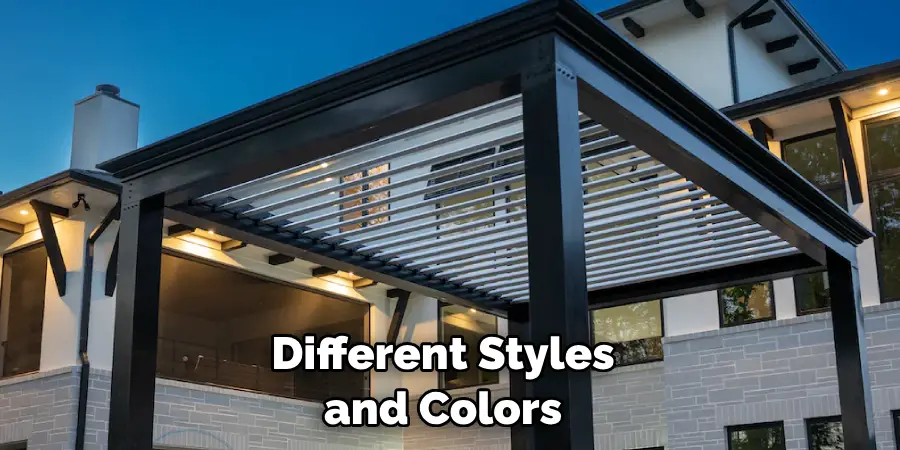
Aluminum covers are becoming increasingly popular as they offer superior protection from the elements while still providing excellent ventilation. Aluminum covers come in many different styles and colors so you can easily find one that matches your home’s aesthetic perfectly.
Additionally, aluminum covers are extremely durable and require very little maintenance over time, which makes them an ideal choice for those looking for long-term protection from the elements without having to worry about maintenance or repairs down the line.
6 Wood Covers
Wood covers are another great option if you prefer a more natural look when covering your pergola, as they provide excellent insulation from both heat and cold while still allowing air circulation through their slats or latticework design patterned into them.
Wood covers come in many different styles such as cedar or redwood which offer natural beauty along with durability that will last over time with proper care. Wood covers also allow you to customize their appearance by staining or painting them in whatever color best suits your aesthetic desires.
7 Polycarbonate Covers
Polycarbonate covers provide superior protection against both heat and cold while still allowing air circulation through their unique design patterned into them. Polycarbonate covers come in various thicknesses ranging from 2mm up to 16mm, which allows you to customize how much insulation you want depending on what climate conditions you live in.
Polycarbonate also offers superior strength when compared with other materials like wood or canvas, making it an ideal choice if you live in areas prone to extreme weather conditions such as hurricanes or hail storms.
8 Fabric Covers
Fabric covers offer an aesthetically pleasing way of covering your pergola without sacrificing any insulation benefits. Fabric covers come in various colors, textures, patterns, thicknesses, weights, etc., so there’s something available out there no matter what look you’re going after.
The fabric also offers superior water resistance when compared with other materials such as wood or canvas, making it ideal if you live in areas prone to heavy rainfall during certain times of the year.
9 Glass Covers
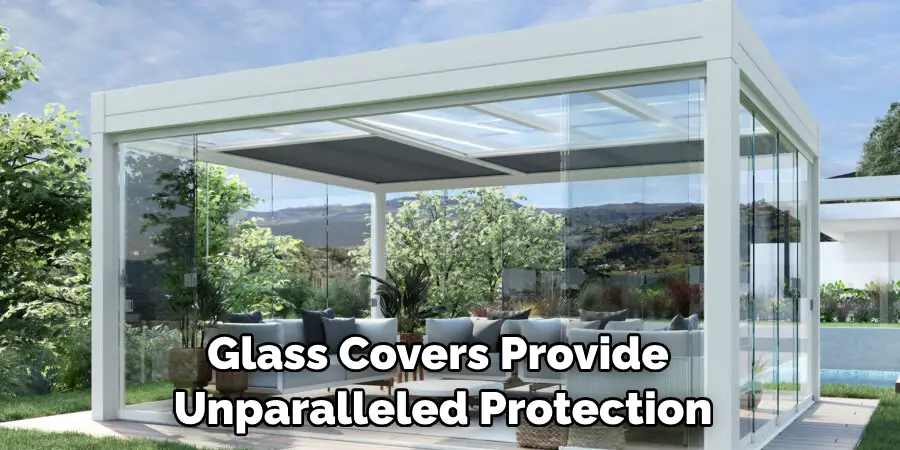
Glass covers provide unparalleled protection from both heat and cold while still allowing air circulation through its unique design patterned into it. Glass also offers superior strength when compared with other materials like wood or canvas, making it perfect if you’re looking for something more permanent than fabric or polycarbonate options.
Additionally, glass can be tinted so that it provides privacy but still allows light through – perfect if you’d like some extra seclusion without sacrificing any sunlight benefits!
10 Plant Vines/Climbing Plants
Planting vines around the perimeter of your pergola can provide shade coverage without sacrificing any airflow benefits due to their unique design patterned into them. Climbing plants such as ivy or wisteria have been known to grow quickly throughout summer months providing ample coverage within just weeks after planting seeds!
This method requires minimal effort but yields beautiful results – perfect if you’re looking for a more natural and environmentally friendly way to cover your pergola. Plus, you’ll have the added bonus of admiring the beautiful flowers or foliage that these plants produce.
Things to Consider When Covering a Pergola
When it comes to covering a pergola, there are several factors to consider. Pergolas are outdoor structures that provide shade and can also serve as decorative additions to your backyard or garden. Covering a pergola not only adds visual interest, but also provides additional protection from the sun, rain, and other elements. In this guide, we will discuss some important things to keep in mind when covering a pergola.
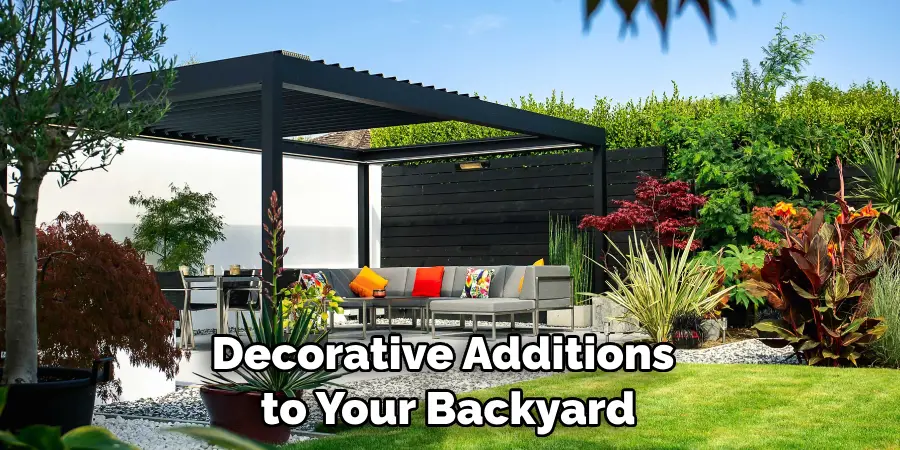
Before deciding on how to cover your pergola, it’s important to consider its purpose and function. Do you want the cover primarily for shade or do you also want protection from rain? Will it be used as an outdoor living space, a dining area, or simply for decorative purposes? Understanding the intended use of your pergola will help you determine the best type of cover to suit your needs.
Conclusion
Pergolas are a great addition to any outdoor living space, but unfortunately, they can be exposed to harsh weather conditions. Covering your pergola is the best way to make sure it stands up to the elements and will last for years to come.
Whether you choose to use shade cloth or an outdoor fabric, creating your own shade cover can not only help protect your structure but also add a little extra style and elegance to your backyard! With these tips in mind, you will have everything you need to know about how to cover a pergola.
So start shopping around for the perfect materials and design – this could be just what you need to make your outdoor living space more inviting and enjoyable!

